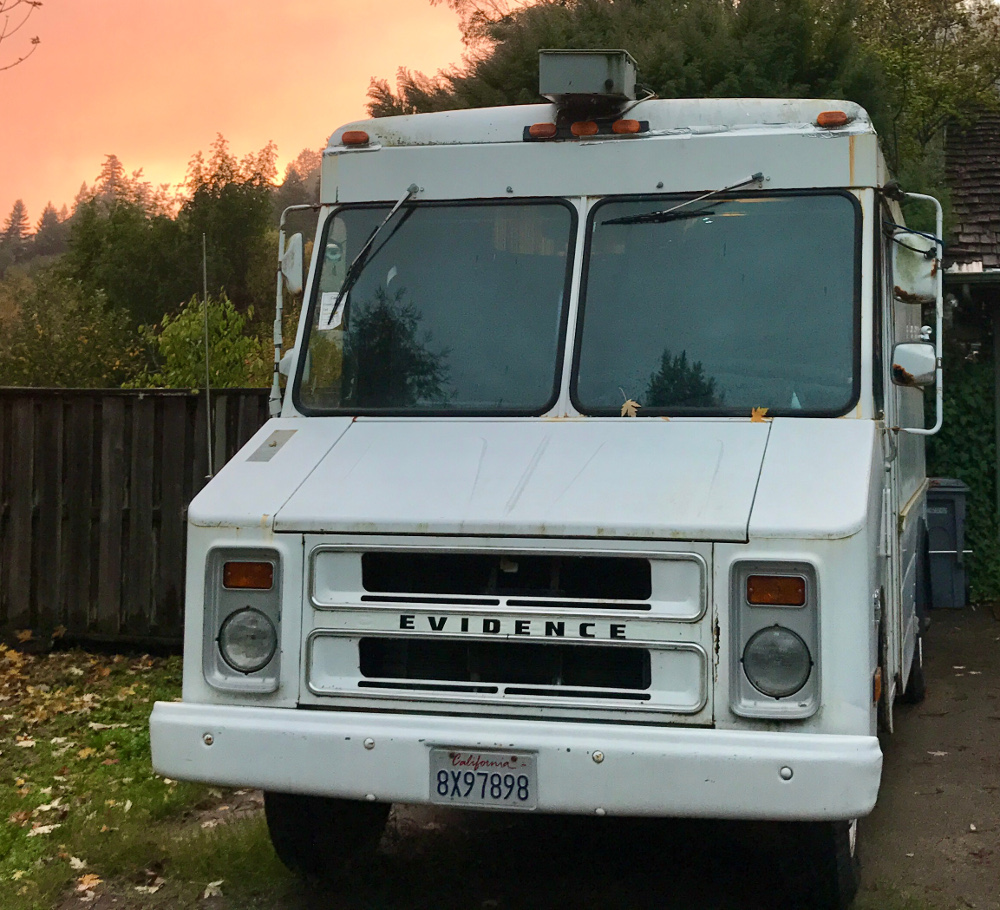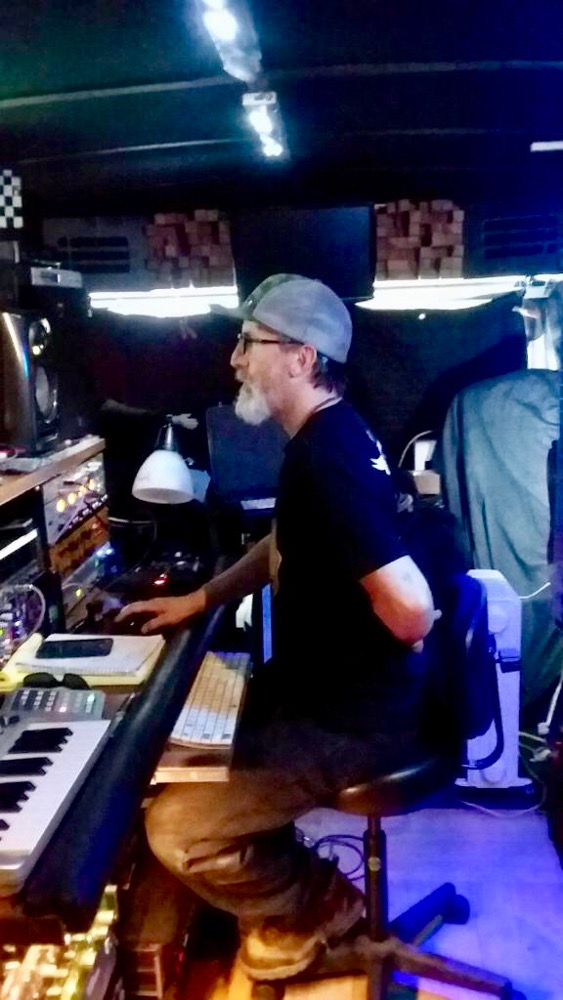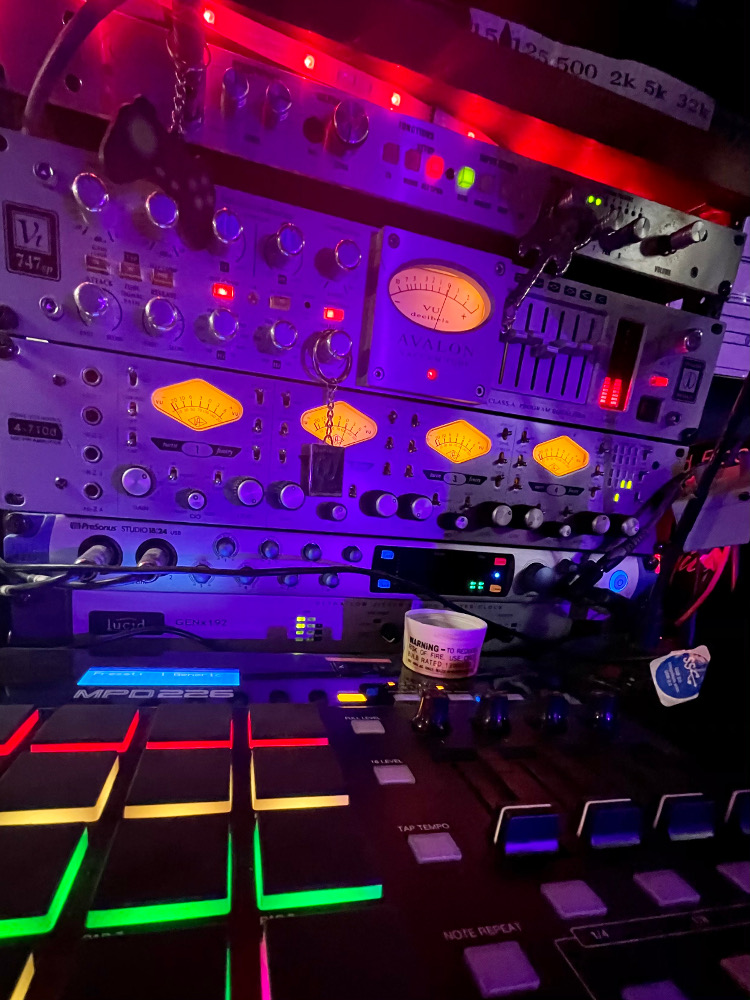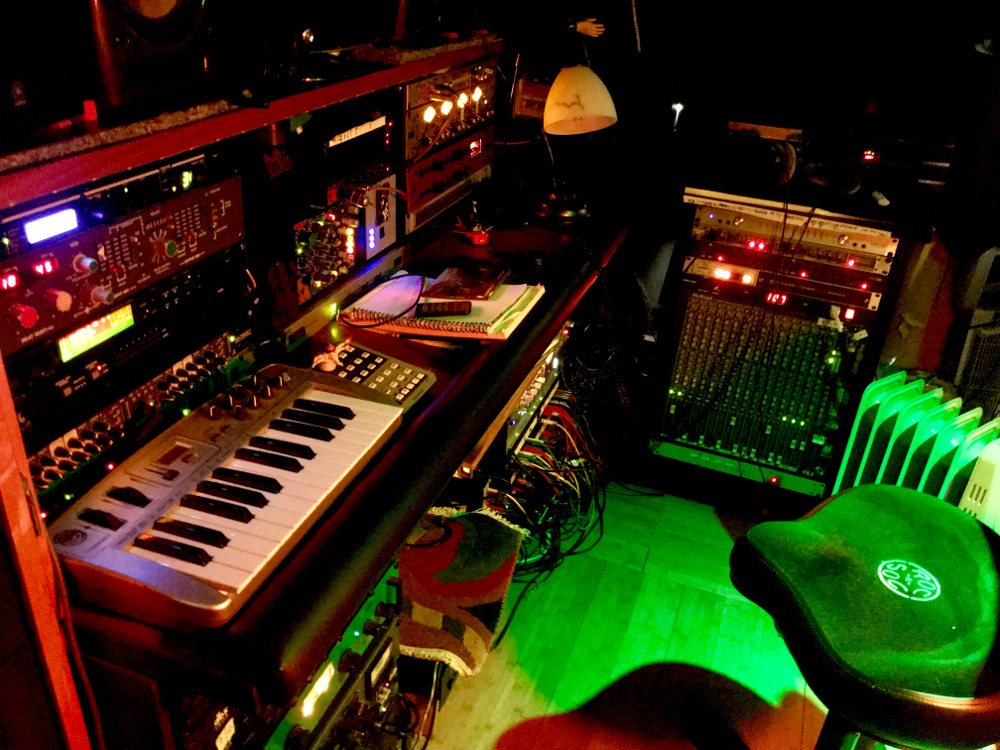How to Mix Hip Hop That Pops: Tips and Tricks to Keep it Crisp
Something sssssstimulating happened when we pressed play on a new song called “Simplicity” – the track popped out of our speakers and clear across the room.
A percolating hip hop + reggae blend, flowing with Africa overtones, it’s a song off the new album Nzuuno by Ugandan artist Man Son Bulubembe. Give it a listen, and you’ll quickly conclude about how to mix hip hop: Whoever mixed this has a flair for keeping it crisp. There’s air, punch, and depth, deftly combined to ensure “Simplicity” stands out in a playlist.
That mixer is Rob Seifert Gage, who was first interested to SonicScoop readers via his rolling studio Audio Evidence Mobile. An experienced studio maven whose credits include Porno for Pyros, eels, Skinny Puppy, and Mike Watt, he’s also a heavy-duty FOH mixer currently on tour with longtime client Wyclef Jean.
For Gage, “Simplicity” stands as a dynamic addition to his discography. Working out of his mega sound van deep in the woods of Northern California’s Humboldt County, Gage crafted a mix designed to keep listeners excited, while keeping the song’s lyrics and beat up front.
Flying his hybrid ITB/analog setup, Gage expertly blended plugins with analog tube and solid state gear. In this action-packed Mix Analysis, he reveals tricks for creating space, clever ways to make intros and outros land with impact, and how to build an expansive mixdown ITB. He also unveils his special blueprint for constructing an excellent-sounding analog stereo bus. AND catch his simple but often overlooked technique for giving instruments added snap.
Do you often have to master it yourself? Gage shows the way for that as well. Forced to move forward after the too-soon passing of his expert mastering engineer, Gage employed a simple but effective method involving one stock limiter plugin.
All this when time was at a premium. With only one week to mix the entire album before embarking on a European, he devised a swift workflow to do it on deadline.
SonicScoop sez: Go now with Gage – your next mix will be all the rage.
Mix (and Mastering!) Analysis: “Simplicity” by Man Son Bulubember
The Mixer: Rob Seifert Gage
The Mix Facility: Audio Evidence Mobile, Redway, California
Artist and Song: Man Son Bulubembe, “Simplicity”, from the album Nzuuno (“Here I Come’), Greenhit Records, 2022
Listen Here:

A Mix Match: I have a friend named Neil Raphael a.k.a. Blinded Beats from my small town who started a record label in Uganda called Greenhit Records. Neil also does beatmaking and production – he asked me to mix a few other artists singles and then asked for this full record to be mixed.
Having a love of Neil and African music and HipHop, I was totally into this project and Man Son’s voice and stories kept me interested.
I was leaving for a tour in Italy and had only a week to mix the full album. Every morning I would mix a track for a few hours, send it to Neil, and then in the afternoon start another which I would finish the next morning. I left for my trip feeling the record was finished and dope.
Studio of Choice: 100% of my work is done in my fully converted former Evidence Van of Humboldt County, CA. I have chosen all the analog gear to give me all the colors I need to fully mix down songs in an out-of-the-box hybrid fashion.
For monitors, I use Yamaha NS10s with a sub. That combination gives a really nice midrange to place the vocals, which I wanted to be the focus on this record.
I mostly use only plugins from Plugin Alliance these days. With the TMT emulations they give me the realism that I go for. Presonus has some great stock plugins that I use also, including the ProEq, Limiter, Dual Pan, and more. The little bit of saturation I did use on the bass came from Melda Production’s MSaturatorMB.
Construction Materials: Blinded Beats sent me the drums broken down into separate Kicks and Snares but gave stems of what I asked for: the high end stuff — hats and crashes — to be together, and any percussion together. If I needed to accentuate anything in the blend I would split the file and level it or process with EQ etc…
The bass and the 808 were not blended which allowed me full control of the low end. Keys were blended and if I felt a lick needed to be in focus I raised the level on those bits after splitting the waveform.
Vocals were sent both with effects and clean and I chose which worked the best — both together seemed to be the best blend. I use a Lexicon Prime Time from the ‘70’s to add width to the vocals, with time delays around 67ms on the left and 97ms on the right.
The de-esser I love right now is the emulation of the dbx 902 from Plugin Alliance.
The tracks were laid out well and I use a mix template with Multiple Master Busses and then choose the right output to the analog chains . Once I figured out the tones I got creative.
Initial Pass: I thought that the vibe of the song needed to be lively and very character-driven by Man Son’s words. As with all Hip Hop I tend to drop out kicks and snares here and there to create air, and with this song I definitely did that since the beat was constant from the start.
Also I like to create the intros and outros if there is a need. In this track I took the lyrics and flew them into the last bars with a fade to keep the story in people’s minds. For the intro I dropped the beat and added some delay with the Presonus Analog Delay plugin to the vocals, to keep a rhythm so when the beat does drop it makes an impact. The telephone vocal hook was done by Blinded Beats so I left that intact.
When I leave the box I find that the sounds really come together well thru electronics, tubes and solid state.
Mixing It! I usually start with the kick and the vocals and get them to work nicely together. Then I must’ve put in the melody keys and lastly the bass, which I like to do so I don’t thin out the instruments by having the bass in from the start.
I break off particular words and put them on another track to add delays, or steroize stuff with Ozone Imager.
I like to make a console across all my master busses, so for this song I chose the Plugin Alliance Lindel API. It has a nice punchy sound and a fast compressor. So all busses have that at the top of the inserts, sometimes followed by a FabFilter EQ for surgical stuff to cut any frequencies that don’t make the song pleasant, or add frequencies back into that track.
Those busses are then put thru the best sounding analog stereo bus, which was a Focusrite ISA Two — it has that “tight fast” transient response. Also on some tracks I flow it parallel to a Daking Compressor, Joe Meek, or Aphex Dominator (stereo multiband brick wall peak limiter) and then it all sums back into an SPL MixDream (16-channel summing mixer), and finally to an older Dangerous D-Box.
The sum out then goes into an Avalon VT-747sp compressor/EQ where the magic happens: Very light side chain frequency compression around 250 Hz and 2.5k, and the EQ has a low boost with the 32 kHz High boosted a little. After the Avalon I go back into the computer through a Universal Audio 4-710d 4-channel mic preamp/compressor straight into the ADAT outs to my Presonus 1820 interface.
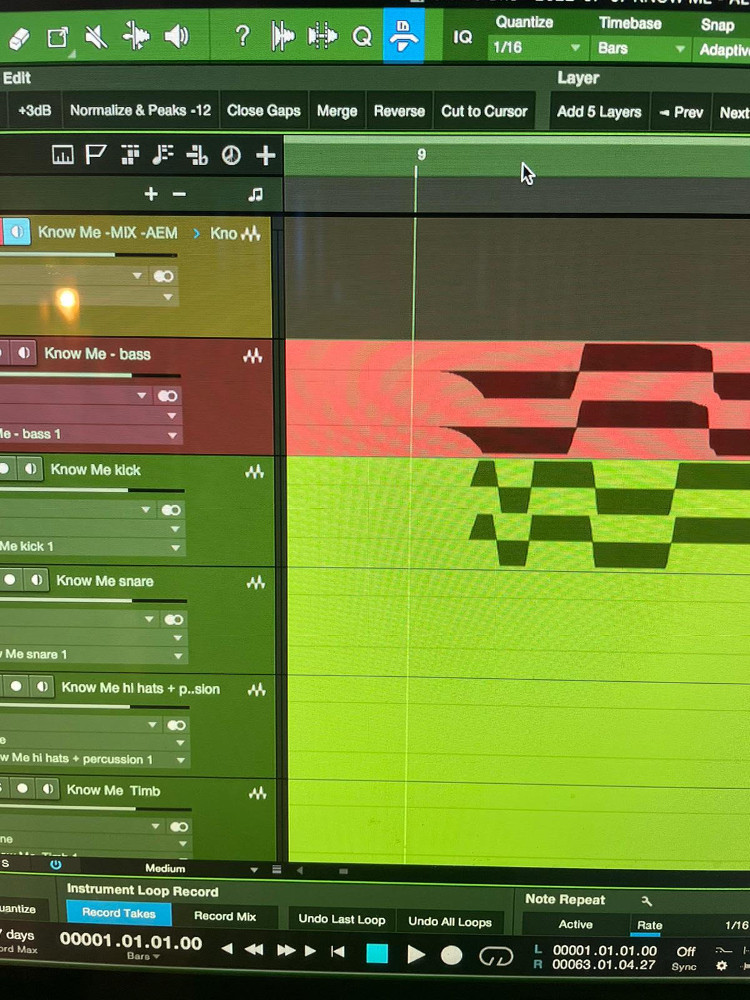
Gage: “In this example the kick’s waveform is going up and the bass is going down. I would flip the polarity on the bass track.”
Extra Crispy: To be honest, it’s a simple but often overlooked technique of getting the phase and polarity of all the instrument to push the speaker, not suck.
I go through each track and make sure all waveforms are going up. On this track, the kicks and bass were going down, which I can now hear immediately before I look. Everything gets a zoomed look and that definitely helps with punch and clarity. It’s amazing how many samples and loops have waveforms going down!
To accomplish this, I find the beginnings of a kick drum track, for example. When I zoom in, it’s very apparent if the waveform is going up or down. Then I either put a plugin like MixTool and push the “polarity” button, or I render it into the track. In Pro Tools this is called “Invert” in AudioSuite.
Mixdown: I mix pretty quick. and on this song it was a vibe and came together quickly, so I was very happy to not mess too much with any added effects.
I use Presonus Studio One since v.1, and the Project page is really easy to master songs. I also like to use a Plugin Alliance Millennia NSEQ-2 in M/S, adding a little highs to the sides and boosting lows and mids in the center. On this song the settings were gentle, maybe +2 dB on all. It adds a width to the track and the tone of that plugin is magical. I don’t go back through the analog chains, just a digital release bounce to 24-bit WAV and 320 kbps MP3.
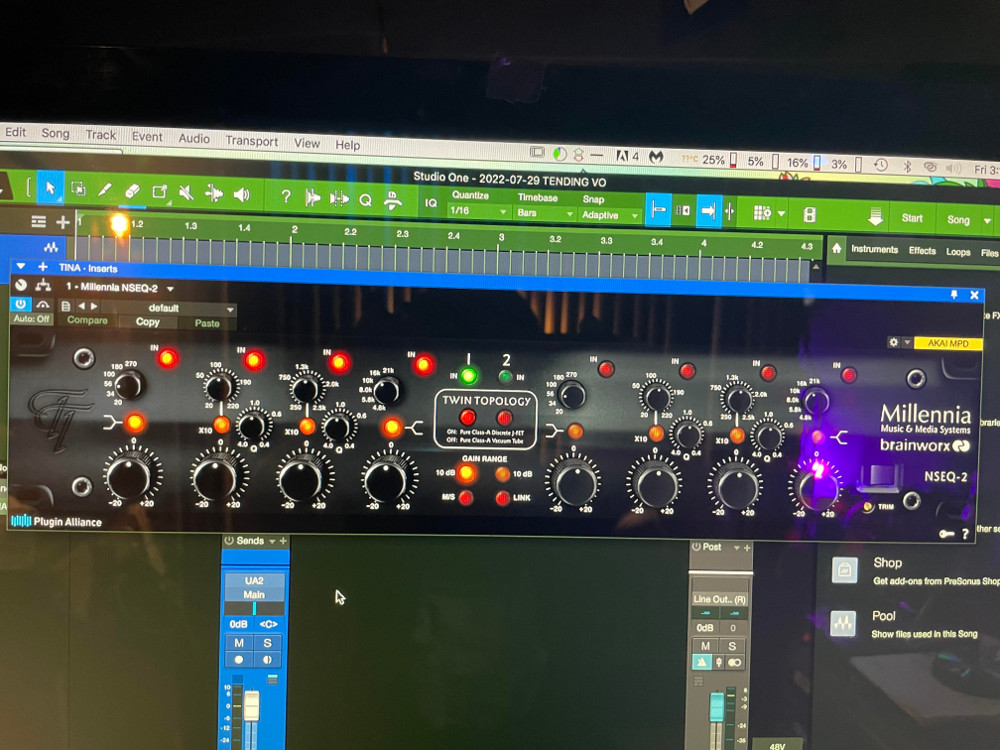
A look at Gage’s ITB mixdown signal flow, with Plugin Alliance’s Millennia NSEQ-2 within Presonus Studio One.
Limited Limiter Master: Recently my mastering engineer of 10-plus years, Mike Wells, passed away. He had a talent for always warming up my digital mixes by running the track through an Ampex ATR 102 1” two-track machine with Arias electronics, as well as his slew of Dangerous Music gear which he recommended to me for my D-Box.
He also would take the low end and frequency-divide it into a Manley EQ and I believe a Variable Mu stereo compressor limiter, which I thought was cool. I learned so much from Mike and to say I miss him is an understatement.
So with him gone, another Mike inspired me, and that is Mike Tucci who I befriended through Instagram. I asked him to listen, and the only comment was that I can get more gain if I set a limiter with Soft Clip – a stock Presonus limiter gave me a few extra dB and that’s what you hear. So between two Mike’s I feel confident in my mastering rig.
It All Adds Up: When working with an artist from Africa I immediately am put In a position of gratitude to have the trust of people I never met from a place very different from the States.
When Man Son heard the mixes he wrote me a DM saying how amazing and professional the sound was, and he expressed his gratitude. On which I replied thanking him for his words that really hit me on this song, “Stop that bully in school/stop that teasing in ghetto!“
I am proud of how this mix is exciting from start to finish, keeping the focus on the lyric and the beat. It helped me on our next project for Greenhit, which I mixed a few weeks later for an Artist named King Missy.
— Rob Seifert Gage, as interviewed by David Weiss. David is an Editor for SonicScoop.com, and has been covering pro audio developments for over 20 years. He is also the co-author of the music industry’s leading textbook on synch licensing, “Music Supervision, 2nd Edition: The Complete Guide to Selecting Music for Movies, TV, Games & New Media.” Email: david@sonicscoop.com
Please note: When you buy products through links on this page, we may earn an affiliate commission.








